
Route Overview
Where is the Kerry Way?
The 214km (133 miles) popular Irish trail is the relaxed and unhurried walking version of the world-famous Ring of Kerry driving route. The trail follows a similar route around the Iveragh Peninsula but instead going anti-clockwise starting and finishing in the busy tourist destination of Killarney.
Why should you walk the Kerry Way?
The Kerry Way is Ireland’s longest signposted hiking trail that circumnavigates the Iveragh Peninsula, beginning and ending in the popular tourist town of Killarney. This Irish Waymarked Trail presents walkers and hikers alike with some truly magnificent surroundings while passing through some of the most isolated and dramatic countryside. By completing this walking trail, you will pass through quintessential Irish villages such as Glenbeigh, Glencar, Waterville, Sneem and Kenmare.
Celebrated as the best and most popular towns in Kerry for a break, these charming destinations beckon with their tranquil beauty and warm hospitality, promising a rejuvenating getaway for all who pass through while hiking the Kerry Way.
The diversity of landscapes encountered is one of the reasons why the Kerry Way is such a popular trail. The route passes through the legendary Lakes of Killarney right through to high and remote moorland.
You will pass through forests, around bays and over summits, all while surrounded by some of Ireland’s most evocative scenery. The Gap of Dunloe, for example, offers spectacular scenery formed naturally during the last Ice Age in Ireland over 25,000 years ago. The glacial breach that caused its formation offers you a magnificent snapshot of its rugged and distinct appearance between two stunning mountain ranges.
One of these ranges is the MacGillycuddy’s Reeks, where Ireland’s highest mountains, Carrauntoohil and Caher, tower over the route west of Black Valley. Onwards to Glencar, you are presented with more breath-taking scenery of imposing mountains and mysterious lakes. Your trip will also include visiting Killarney National Park, the first national park in Ireland. Most of our Kerry Way tours also include a unique boat trip on the famous Lakes of Killarney which allows for a different perspective of the spectacular scenery on show. From your seat on the boat you may catch glimpses of Irish wildlife, to include soaring eagles and shy red deer, while you will be treated to local stories and folklore by the helmsman.
The return leg of the trail passes along the startlingly & contrasting semi-tropical south coast of the peninsula. Along this section, you will encounter much different flora than the northern coast of the peninsula, such as palm trees – which are not a common sight in Ireland! The route will lead you to the Old Kenmare Road, where you will be able to see traces of Ireland’s past including famine settlements. Looking West, you will be able to see Ireland’s magnificent Atlantic coastline
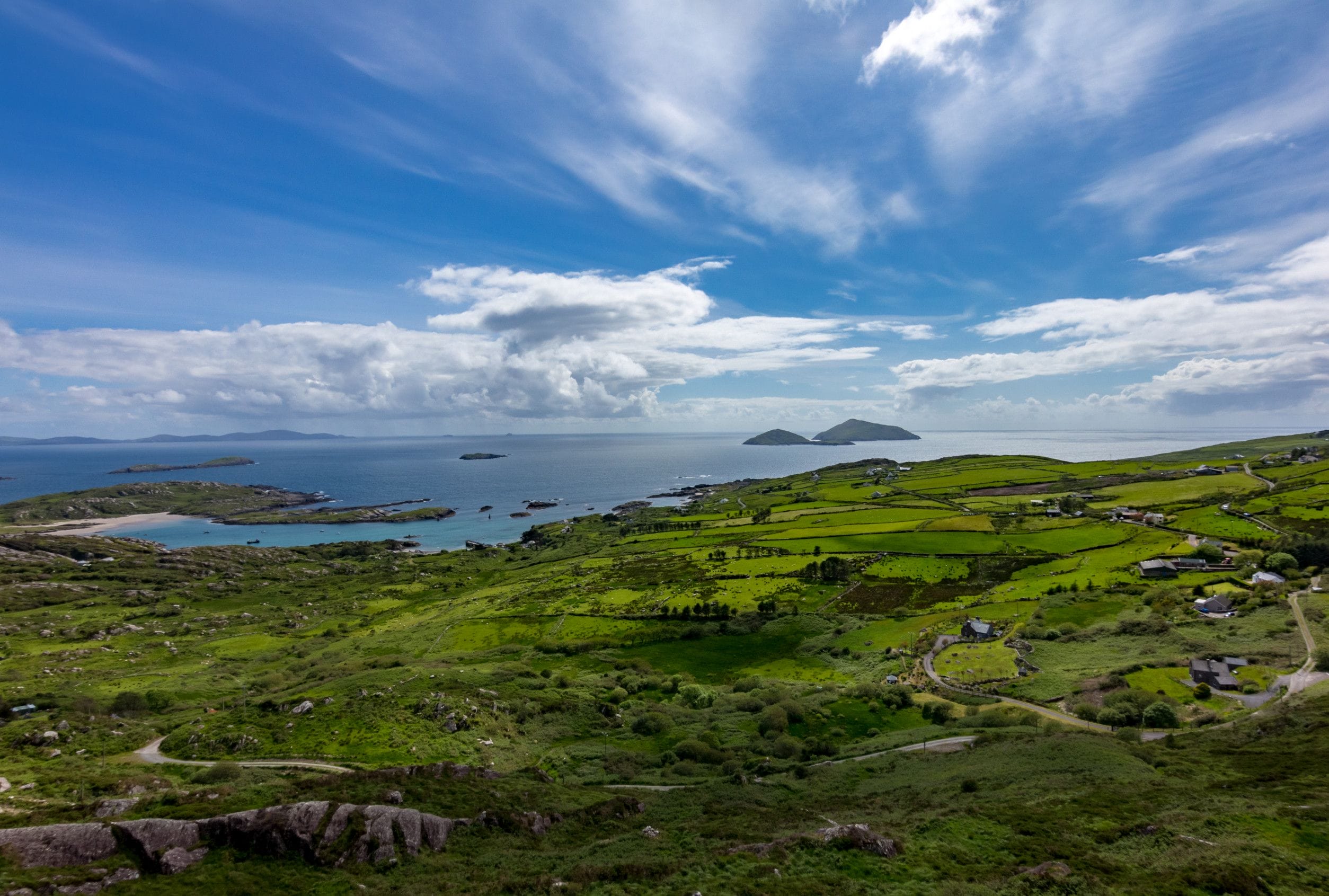
When is the best time to walk the Kerry Way?
When booking a hiking holiday, every season has its own charm, but indeed some months are better for hiking than others. It is always important to make yourself aware of the best times to walk any long-distance trails as weather conditions and busyness can greatly impact your overall hiking experience.
Of course, hours of sunshine, probability of rain, wind and temperature depend solely on the respective season in Ireland.
The Kerry Way is considered to be one of the most popular long distance walking trails in Ireland. Due to the longer daylight hours and more favourable weather conditions we recommend that you visit the Kerry Way anytime from March through to October. If you are thinking of completing the Irish trail during the other months of the year, there is a high possibility you will be met with adverse weather conditions including ice, snow, or storms, along with shorter days of daylight.
As a result of the prevailing southwesterly winds along with the warmth provided by the Gulf Stream along the west coast, Kerry’s climate is mostly mild. If it is sunshine you are looking for, then July and August are the months for you as temperatures range between 14-16C (57-61F). The coldest months in Kerry are January and February with average temperatures ranging from 4-7C (39-45F).
Due to it’s popularity, it is advised that you book your hiking holiday early on the Kerry Way to avoid any disappointment. It is also important to note that the months of July and August are commonly regarded as the the high season too due to Irish family holidays.
How long does it take to hike the Kerry Way?
The 214km (133 mile) long Kerry Way usually takes the average adult with reasonable fitness approximately 7 to 10 days to cover the entire long distance Irish walking trail while soaking up your surroundings.
At Hillwalk Tours, we offer gentle and moderate tour grading levels depending on the balance of physical challenge and comfort level that you require. Within these levels, you can choose between 4 to 12-day hiking tours to complete the trail. All you have to decide is how many kilometres / miles you would like to walk per day and we take care of the rest!
Tour Route
Types of Trails
Choosing the right hiking tour for you can be, at times, tricky. It is always important to consider your own physical capability and comfort levels.
For example, at Hillwalk Tours, we have grouped each trail route we offer into three categories depending on personal preference and fitness levels. These are – gentle, moderate, and challenging. Each of these categories, depending on the destination, will include anything from 4 to 13-day itineraries, with customers given the option to add rest days where they see fit.
Our gentle hikes are perfectly suited for those who would consider themselves as a part-time hiker who enjoys taking photos and meeting locals while taking in the spectacular scenery. Our moderate hikes will suit people who are used to regular exercise and appreciate the opportunity of covering plenty of ground each day without going beyond their limits. Finally, our challenging hikes are for hikers who look to set off early in the morning and not stop until they have reached their destination.
With regards to our (Tour Route) trail, we offer both gentle and moderate hikes. Each of these hiking categories cover the following average hiking distance and time each day:
Gentle: 16-18km or 10-11 miles and between 5-6 hours per day
Moderate: 19-21km or 12-13.5 miles and between 5-7 hours per day
Challenging: 26-30km or 16-19 miles and between 5-8 hours per day
Hillwalk Tours Guide Notes
If you decide to walk the trail with Hillwalk Tours, you will receive a detailed walking pack once you have fully booked your hiking holiday. This walking pack will include detailed Ordnance Survey (OS) maps and unique route notes and walking directions written and constantly updated by our route development team.
By personally walking each trail and creating our own detailed route notes, it allows us to provide more itineraries, route options and alternatives than what you will typically find across generic guidebooks. It also includes GPS tracks meaning you will never have to worry about getting lost.
Starting and Finishing Point
The Kerry Way leaves the popular tourist town of Killarney and heads south along the shores of Lough Leane into Killarney National Park. From there the trail reaches Torc Waterfall, then follows the Old Kenmare Road and to reach the remote Black Valley in the shadow of the McGillycuddy’s Reeks, the mountain range which includes Carrauntoohil, Ireland’s highest mountain.
A mountain pass leads into Glencar and Lough Acoose where the trail follows the Caragh River valley before either circling Seefin Mountain or crossing the Windy Gap (#1 of 3) to reach Glenbeigh. The Kerry Way then climbs and follows the hills overlooking Dingle Bay until it reaches Drung Hill, where it turns inland to Foilmore, near Cahersiveen.
From Foilmore, the route bears south and traverses two ridges towards the village of Waterville. Two possible routes lead from there to Caherdaniel: a coastal trail around Farraniargh Mountain or a longer inland trail, crossing Capall River and mountains via Windy Gap (#2) to Caherdaniel.
An old coach road now brings the Way to Sneem and onwards to Kenmare by a trail that follows the coast above Kenmare River. The final section crosses the mountains between Kenmare and Killarney via another Windy Gap (#3), there re-joining the outbound route of the Kerry Way at Galway’s Bridge, and retracing the route through Muckross to the end in Killarney.
Sample Kerry Way Itineraries
The following are examples of Hillwalk Tours Gentle, Moderate and Challenging itineraries of hiking the Kerry Way.
Gentle 6-Day
Day 1: Arrival in Glencar
Day 2: Glencar – Glenbeigh (13 or 18km / 8 or 11 miles) Choice of two beautiful routes to Glenbeigh.
Day 3: Glenbeigh – Foilmore (18 km / 11 miles)
Day 4: Foilmore (Coars Cross) – Waterville (18km / 11 miles)
Day 5: Waterville – Caherdaniel (13-16km 8 / 10 miles)
Day 6: Departure from Caherdaniel
Moderate 7-Day
Day 1: Arrival in Killarney
Day 2: Black Valley – Killarney (19km / 11.8 miles)
Day 3: Black Valley – Glencar (25km / 15.5 miles)
Day 4: Glencar – Glenbeigh (13 or 18km / 8.1 or 11.2 miles)
Day 5: Glenbeigh – Foilmore (20km / 12.4 miles)
Day 6: Foilmore – Waterville (20km / 12.4 miles)
Day 7: Departure from Waterville
Moderate 8-Day
Day 1: Arrival in Killarney
Day 2: Black Valley – Killarney (19km / 11.8 miles)
Day 3: Black Valley – Glencar (25km / 15.5 miles)
Day 4: Glencar – Glenbeigh (13 or 18 km / 8.1 or 11.2 miles)
Day 5: Glenbeigh – Foilmore (20km / 12.4 miles)
Day 6: Foilmore – Glenbeigh (22km / 13.7 miles)
Day 7: Waterville – Caherdaniel* (13-16 to 28km / 8.1-9.9 to 17.4 miles)
Day 8: Departure from Waterville
*Two route options available here
Challenging 9-Day
Day 1: Arrival in Killarney
Day 2: Killarney – Bridia Valley (32km / 20 miles)
Day 3: Bridia Valley – Glenbeigh (22 to 27km / 13.5 to 17 miles)
Day 4: Glenbeigh – Foilmore (20km / 12.5 miles)
Day 5: Foilmore –Waterville (22km / 13.5 miles)
Day 6: Waterville – Caherdaniel* (13-16 to 28km / 8-10 to 17.5 miles)
Day 7: Caherdaniel – Sneem (17km / 10.5 miles)
Day 8: Sneem – Kenmare (32km / 20 miles)
Day 9: Departure from Kenmare
*Two route options available here
Challenging 11-Day
Day 1: Arrival in Killarney
Day 2: Black Valley – Killarney (19km / 12 miles)
Day 3: Black Valley – Glencar (25km / 15.5 miles)
Day 4: Glencar – Glenbeigh (13-18km / 8-11 miles)
Day 5: Glenbeigh – Foilmore (20km / 12.5 miles)
Day 6: Foilmore – Waterville (22km / 13.5 miles)
Day 7: Waterville – Caherdaniel* (13-16 to 28km / 8-10 to 17.5 miles)
Day 8: Caherdaniel – Sneem (17km / 10.5 miles)
Day 9: Sneem – Kenmare (32km / 20 miles)
Day 10: Kenmare – Killarney (24km / 15 miles)
Day 11: Departure from Killarney
*Two route options available here
Currency and Expenses
The currency used throughout Ireland is the Euro (€).
The cost of food, drinks, and activities throughout the Kerry Way can vary depending on several factors such as the type of establishment, the time of year, and personal preferences.
Eating out in restaurants in Kerry can range from affordable to moderately expensive, depending on the type of cuisine and establishment. A meal for one person in a mid-range restaurant can cost around €15 to €30, excluding drinks. If you prefer more upscale dining, the prices can go higher. The cost of drinks in Kerry, particularly in pubs, can vary. A pint of beer or a glass of wine can cost around €4 to €8, depending on the establishment. Prices may be higher in touristy areas, such as Killarney, or during peak seasons.
The Kerry Way offers walkers a variety of activities to choose from, including boat trips and exploring historical sites. The prices for these activities can vary. As mentioned above, it’s worth noting that prices in Kerry can be higher during the peak tourist season (June, July and August) compared to the off-peak season.
Kerry Way Accommodation and Services
Along the Kerry Way, you can find various accommodations and services that cater to hikers’ needs.
Hotels & Guesthouses
There are several hotels and guesthouses available along the Kerry Way, particularly in towns and villages such as Killarney, Glenbeigh, Cahersiveen and Kenmare. These establishments offer comfortable rooms, dining facilities, and amenities for travellers.
Bed & Breakfasts (B&B)
B&Bs are a popular choice along the trail, providing cozy and affordable lodging options. They offer comfortable rooms, breakfast, and often have friendly hosts who can provide local information and tips for your journey.
Hostels
For budget-conscious travellers, there are hostels scattered along the route. These establishments usually provide dormitory-style accommodations and communal facilities such as kitchens and lounges.
Camping and Glamping
If you prefer camping, there are designated campsites available along the Kerry Way in areas such as Killarney, Caherdaniel, Glenbeigh and Waterville. These sites typically provide basic amenities such as toilets, showers, and sometimes cooking facilities.
Wild camping along the Kerry Way, although not prohibited by law, requires careful consideration due to the exposed terrain, lack of shelter from strong winds and rain, muddy conditions in Spring, and the need for appropriate equipment to endure Ireland’s unpredictable weather.
There are also some glamping options available along the Kerry Way, for those seeking a more unique and luxurious camping experience.
Airbnb and Self-Catering
Airbnb accommodations offer a diverse range of options, from cosy cottages to seaside retreats, providing a unique and personalized experience for hikers. For example, some working farms along the Kerry Way offer farmhouse accommodations, providing a unique experience for visitors, allowing them to stay in rural settings and witness farm life up close.
Restaurants and Cafes
Along the trail and in towns and villages, you’ll find numerous restaurants, cafes, and pubs where you can enjoy a meal, snack, or a refreshing drink. These establishments serve both local and international cuisine, including traditional Irish dishes. Most restaurants and cafes will also be able to meet several dietary requirements.
Shops and Grocery Stores
In the towns and villages along the Kerry Way, you’ll find grocery stores and shops where you can stock up on food, water, and other supplies for your journey. It’s advisable to plan ahead and carry snacks and water while hiking between settlements.
ATM’s
There are ATMs available in towns and villages along the route, including Killarney, Glenbeigh, Glencar, Cahersiveen and Kenmare. It’s important to note that the availability of ATMs may be limited, especially in smaller villages or remote areas. To ensure you have enough cash for your journey, it’s advisable to plan ahead and withdraw sufficient funds in larger towns where ATMs are more readily accessible. Additionally, carrying some cash with you is recommended for places that may not accept cards or in case of any unforeseen circumstances. There is the potential to obtain cashback from certain stores. This means that when making a purchase with your card, you can request additional cash on top of your payment. However, it’s worth noting that not all stores offer this service, and the maximum amount of cashback might vary.
Kerry Way Trail Etiquette
Kerry is renowned for its stunning natural beauty and environmental conservation efforts. Many locals are passionate about preserving the region’s landscapes and marine life. Respect for the environment, such as practicing responsible tourism, following designated hiking trails, and supporting eco-friendly initiatives, is highly valued in Kerry.
Trail etiquette is highly valued along the Kerry Way, and hikers are encouraged to follow the principles of the Leave No Trace organization. It is essential to respect the natural environment by refraining from littering or leaving behind any waste, including fruit peels, wrappers, or other non-biodegradable items. Hikers are expected to carry out all their trash and dispose of it properly in designated bins or take it with them until they find appropriate disposal facilities. By practicing Leave No Trace principles, hikers contribute to preserving the pristine beauty of the trail and ensuring its enjoyment for future generations.
At Hillwalk Tours, we proudly support sustainable tourism and love the countryside as it is – wild, peaceful and clean. We are proud to support the “Leave No Trace” initiative that aims to preserve the natural beauty of each nations countryside where we offer hiking holidays.
Hillwalk Tours Kerry Way Map
https://www.google.com/maps/d/u/0/viewer?mid=1EbdtfIflM3DAbhAOLkQvqqhaVVE&ll=51.932666783463375%2C-9.883497169433559&z=11Kerry Way Terrain
Waymarking
The Kerry Way is well sign-posted throughout its entirety. You will regularly see a yellow arrow throughout one of Ireland’s longest trails which will help indicate your every next turn, making it significantly difficult for you to get lost or take the wrong turn.
If you are ever in doubt, you can also check the Hillwalk Tours turn by turn directions and route notes including GPS coordinates. We also supply all you need to know about local information and history as you pass, along with trail alternatives and other activities.
Want to learn more about how to read a map? Check out this blog post.
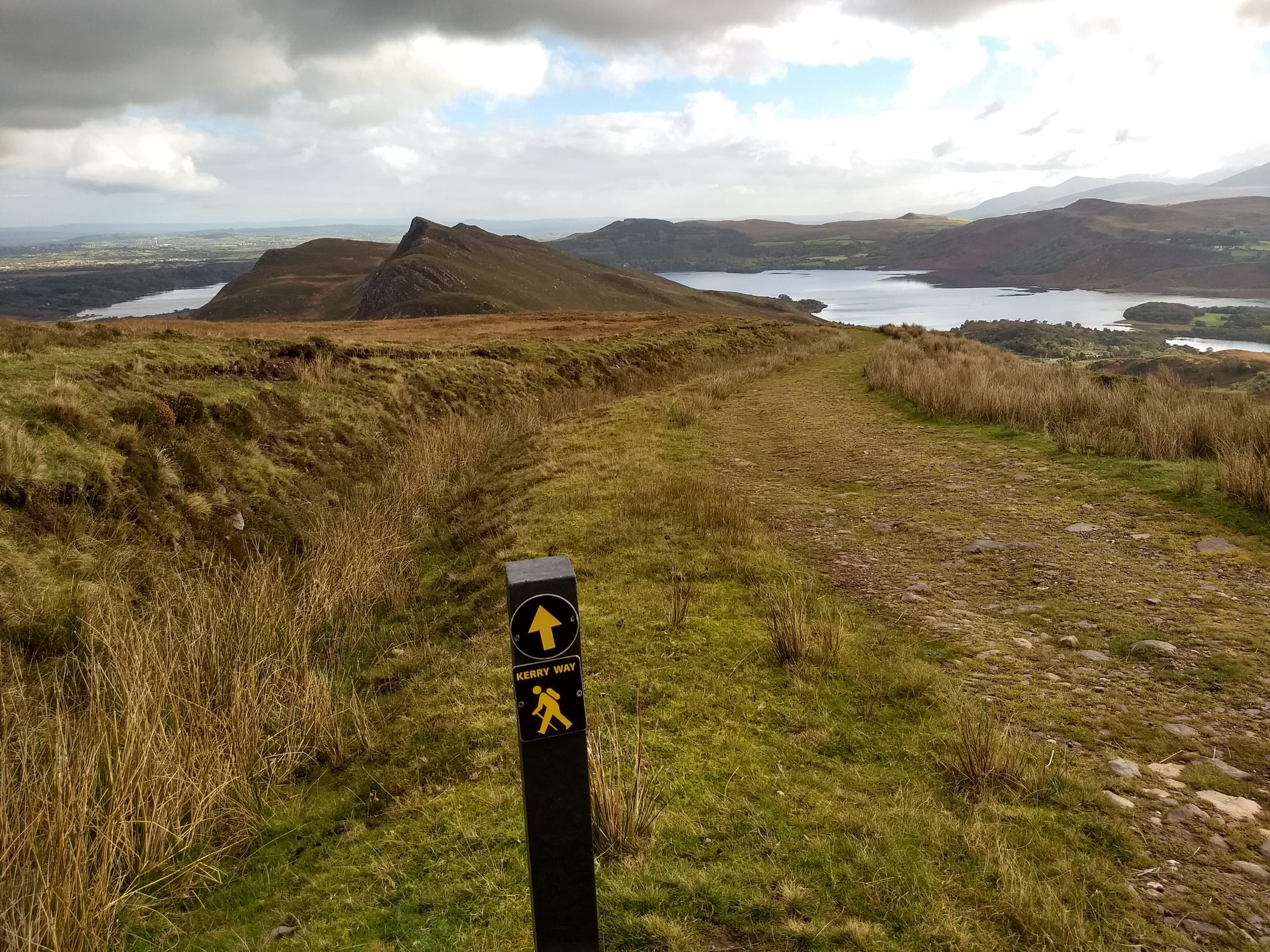
Difficulty
The Kerry Way covers a wide variety of terrain, from the firm footing of tarmac roads to more rugged sections out on wild mountainous countryside. The trail follows small ‘green’ roads, commonly known as ‘boreens’, long-abandoned coach roads and mass paths that are now overgrown with grass but nonetheless, quite firm underfoot. There are also sections that cross through forestry, national parks and farmland which can become quite boggy in places. Some sections in the mountains and on the open moorland can be very isolated and off-road sections can occasionally be wet and muddy.
Though it skirts around Ireland’s highest mountains, the Kerry Way avoids the higher peaks and opts for the lower reaches of mountain ridges. Total aggregate ascent over the whole route is approximately 5,400m, and there are some sustained and quite steep climbs, especially between Black Valley and Glencar. Along this section, you will also pass over the highest point of the route, which is found at the top of the Lack Road, and is only 385m above sea-level.
Sights & Attractions
Ross Castle
Ross castle is situated on the shores of Lough Leane, just outside the town of Killarney. It was built in the 15th Century and proved to be an incredibly important stronghold for Irish clans. In the mid-1600s, British warships were guided down the River Laune and dragged across land onto Lough Leane. Ross Castle subsequently surrendered.

Killarney National Park
Following the country’s independence from Britain, Killarney National Park became Ireland’s first national park in 1932. The park boasts over 25,425 acres of diverse ecology and a variety of landscapes including the legendary Lakes of Killarney and rugged mountainous terrain.
At Hillwalk Tours, we offer walkers the chance to view the park from a different perspective by taking a boat trip along the Lakes of Killarney. For more information, check out the Kerry Way tours we offer.
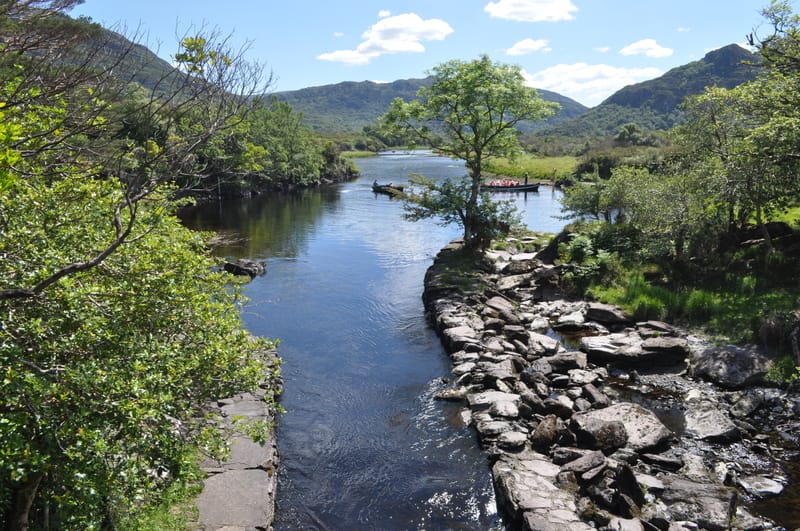
Gap of Dunloe
The Gap of Dunloe is a narrow mountain pass that was formed as a result of a glacial breach during the last Ice Age in Ireland over 25,00 years ago that separates two mountain ranges, the McGillycuddy Reeks in the west and the Purple Mountains in the east. The views on show are highly recommended!

4. Killarney Town
The vibrant Irish tourist town of Killarney is the starting and finishing point of the Kerry Way. Nestled in a valley between Ireland’s highest mountain range, the McGillycuddy Reeks, the colourful town offers walkers the perfect location to soak up Irish heritage, history and craic with an abundance of traditional Irish pubs and music.
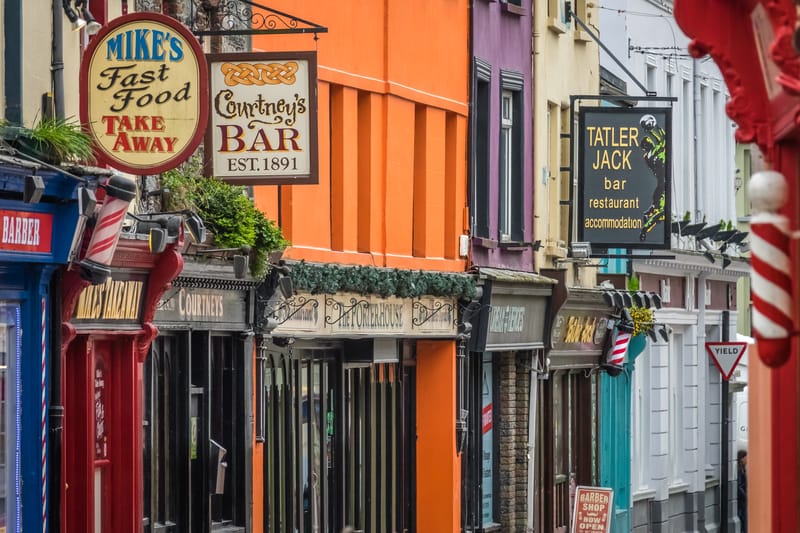
5. Torq Waterfall
This stunning waterfall, located in Killarney National Park is one of the main highlights along the Kerry Way. It stands at an incredible 20 metres (66 feet) high and is a perfect stop off point along the trail.

6. Glencar
This very small rural Irish village just outside Killorglin offers walkers and hikers alike spectacular views of the surrounding mountainous terrain and lakes. The perfect location to stop and catch your breath.
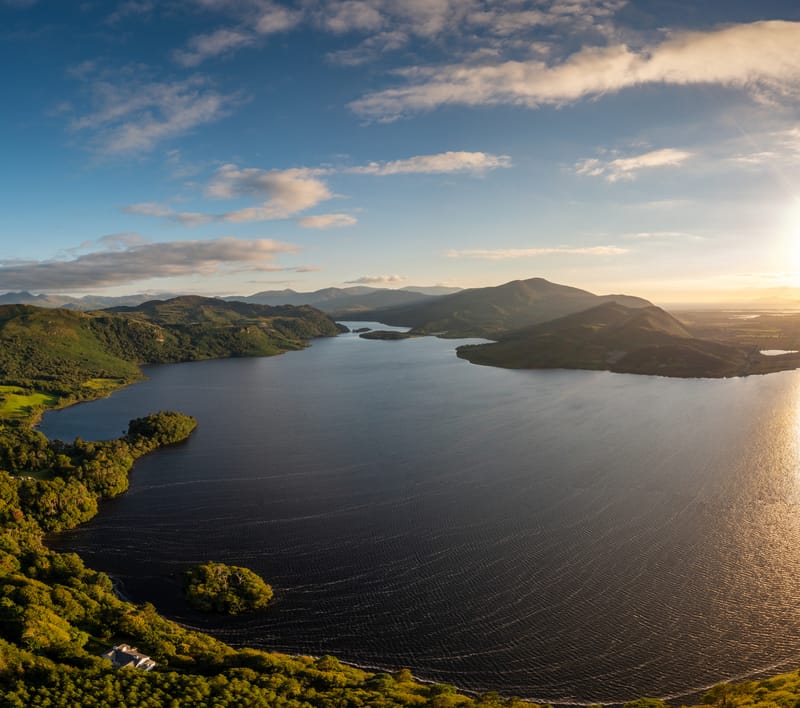
7. Waterville
Along the trail, you will come upon the coastal town of Waterville which has been a holiday destination for some famous faces over the years. In 1946 Walt Disney stayed in the town while he was researching for the film ‘Darby O’Gill and the Little People’ and met the then President Seán T. O’Kelly and Taoiseach (the title given to the head of the Irish Government) Éamon de Valera during his stay.
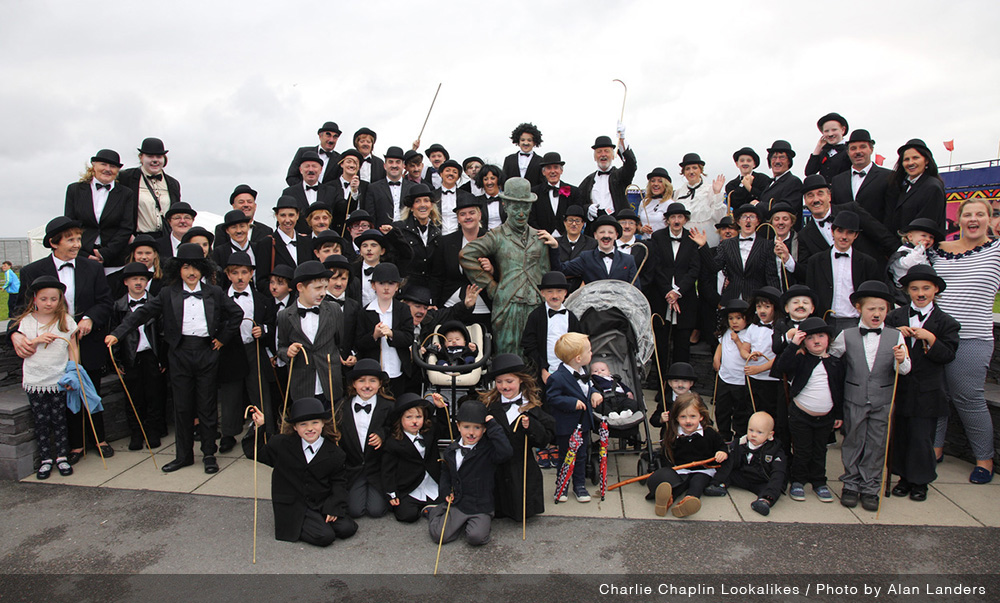
It was on Disney’s recommendation that brought silent movie legend Charlie Chaplin to Kerry. When he first arrived with his family, the hotel recommended was full and were turned away, unrecognised by the receptionist on duty. When the owner realised what happened he sped after them, convinced them to return, and found them a room by making his own family leave their quarters!
Because of this the Chaplins continued to visit and became beloved by the local community. Charlie is the town’s most celebrated guest with a film festival held annually in his honour and a bronze statue of his likeness standing proudly near the Waterville shore.Your Attractive Heading
8. Derrynane House, Home of the Liberator
Derrynane National Historic Park is the home of Ireland’s “Liberator”, Daniel O’Connell, the acknowledged political leader of Ireland’s Roman Catholic majority in the first half of the 19th century. As a politician he was instrumental in passing an act which lifted many restrictions on Catholics. His experience of mob rule while studying in France turned him against violence as a means for political change. As a committed and peaceful advocate O’Connell was a celebrated figure across Europe and North America. His reputation attracted distinguished visitors to Derrynane from around the world. One guest recalled eating dinner with 33 others who came from Ireland, England, Scotland, France, Germany and the United States. Such was O’Connell’s prestige as that George IV reportedly complained that while “Wellington is the King of England”, O’Connell was the “King of Ireland”.
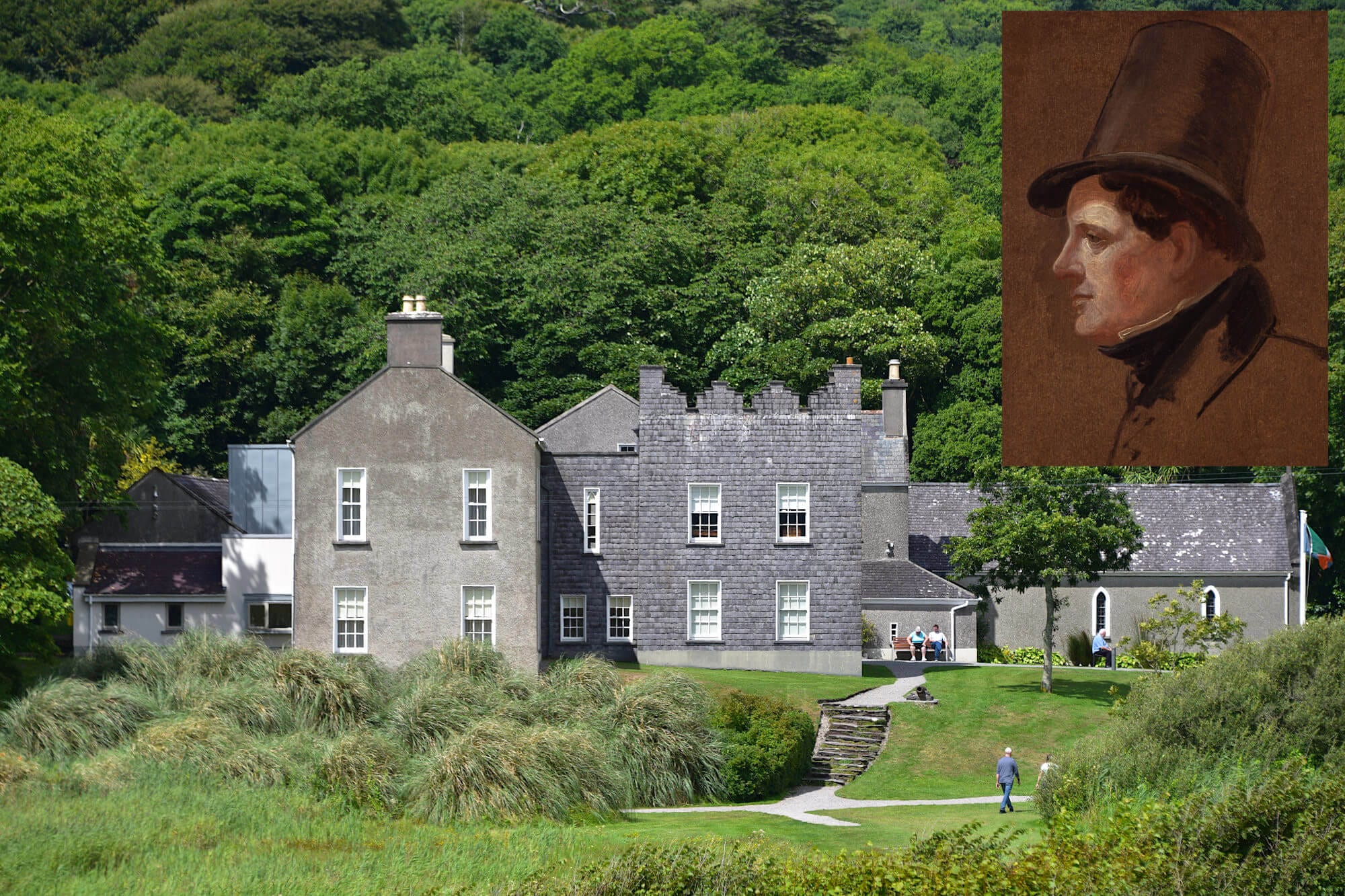
In the 1840’s frustrated with the pace of change within the political system for an Irish parliament he took to addressing “monster meetings” to drum up support for the cause. At the Hill of Tara on the 15th August 1843, seat of the former high kings of Ireland, a crowd of more than half a million people listened to his words. Upset at the scale of this he was later imprisoned by the authorities. On his release in September 1844 over 200,000 people were on the streets of Dublin as he was paraded triumphantly on a bespoke built carriage which can still be seen today at the house.
9. Sneem
A quintessential Irish village that lies on the estuary of the River Sneem. It’s name in the Irish language, An tSnaidhm, translates to English as ‘the knot’. The name is said to have been given to the village as it comprises of two squares, North and South with a bridge in the middle that acts as a knot between the two squares.

10. International Dark-Sky Reserve
Something very different for those hiking the Kerry Way – the Kerry International Dark-Sky Reserve. Covering approximately 700 squared kilometres (200 squared miles), this enchanting reserve can be seen at night in certain regions along the Kerry Way including Foilmore and Waterville. Obviously, we advise against hiking at night but it serves as a reminder that you should always look up!
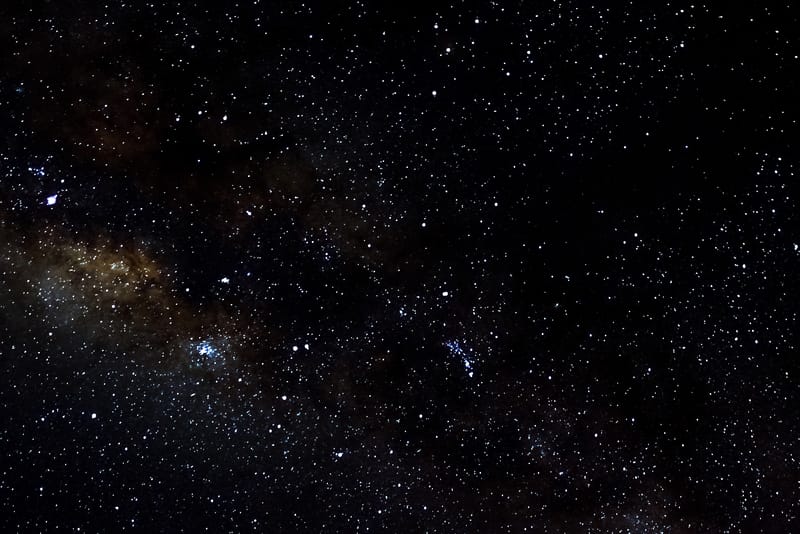
Wildlife
Wildlife is plentiful along the Kerry Way with a vast array of mammals, birds and aquatic species on show including red deer, Irish hares, squirrels, eagles, trout and salmon.
It is of course great to get up close and personal with any of these animals. However, to maintain these experiences as much as possible, it is important that hikers interact as little as possible with the wild animals.
The do’s and don’ts regarding wildlife are, as always, self-explanatory. Feeding is of course out of the question, but also try not to run after animals for photos. Leave the animals alone as much as possible – after all, you are visiting their “home”.
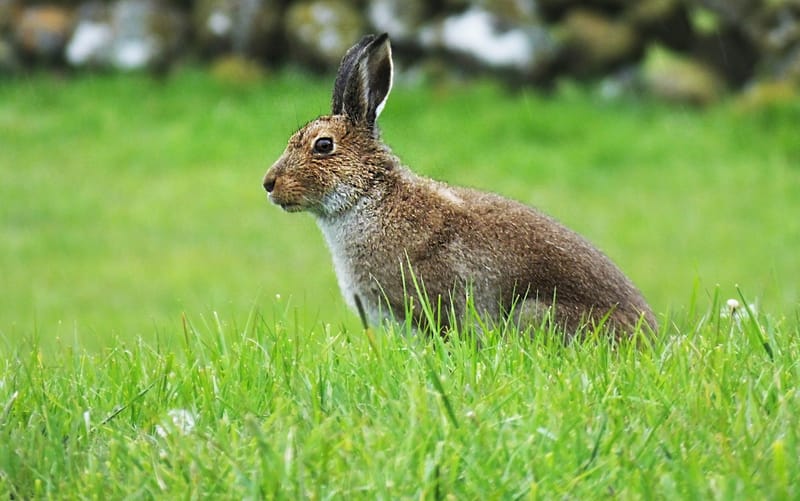
The Rare but Loud Natterjack Toad
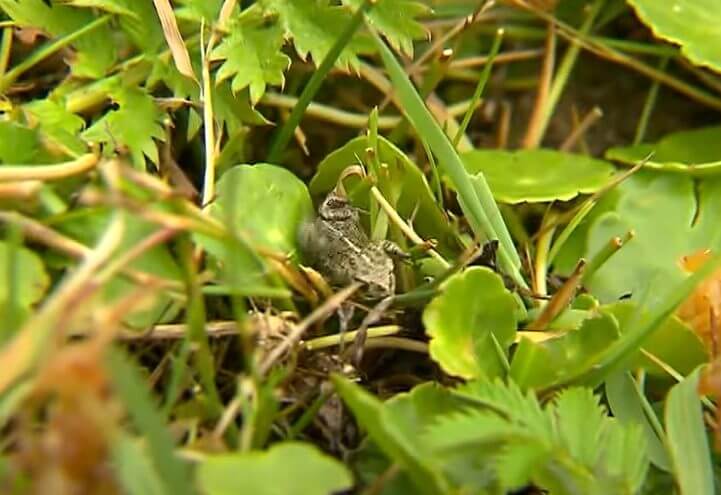
The endangered Natterjack Toad is one of Ireland’s three native amphibians and its only native toad. It ranges from 6 to 9 centimeters in length, has a yellow stripe down its back and is found in shallow ponds on dune grasslands. After the 1940’s the toad was no longer found in the grounds of Derrynane House so a restoration project began in the early 1990’s with the creation of a number of ponds. The population is now stable and plans are afoot to further stabilise the species using the same method. A census conducted just over 10 years ago found that Ireland had 162 million frogs but just 10,000 toads! During April and May the breeding call of the males can be heard from 1km away. You can see the toads if you are lucky (they are nocturnal by nature) on one of the signposted trail walks in the grounds of Derrynane National Historic Park and also in the dunes of Castlegregory on the Dingle Peninsula. PLease note the Natterjack is a protected species under the Wildlife Act, 1976.
History of the Kerry Way
The Kerry Way trail was first proposed and developed by the Luane Mountaineering Club in 1982 before being completed in 1989. The club chairman, Seán Ó Súilleabháin, proposed the creation of the longest walking trail in Ireland after noticing that their was a cluster of roads and paths that could form a long distance route along the famous Ring of Kerry.
The Ring of Kerry, itself, is believed to have been formed when Christian monks built a sanctuary at the top of the Iveragh peninsula over 1300 years ago, which was then seen as the furthest and most western part of the world.
Remembering Seán Ó Súilleabháin: Pioneer of the Kerry Way
Seán Ó Súilleabháin, a beloved figure in the hillwalking community, passed away at the age of 83, leaving behind a legacy that extends far beyond his years. A passionate hillwalker and early environmentalist, Seán played a pivotal role in shaping the outdoor landscape of the south-west of Ireland.
As the founder of the Kerry Way, he ensured a lasting connection between enthusiasts and the stunning Kerry and Cork regions. Seán’s dedication to the project, developed in 1989, showcased his deep commitment to both the environment and local communities. Drawing on his insurance background, he navigated the complexities of securing indemnity for farmers along the route, highlighting his practical approach to conservation. His genial nature and community activism earned him respect, not only as the first chair of the Federation of Mountaineering Clubs of Ireland but also as a mentor and guide who introduced many to the joys of hillwalking.
Seán Ó Súilleabháin’s impact as a trailblazer in outdoor adventure and environmental stewardship will be remembered by generations to come.
Did you know?
The legendary Irish warrior, Fionn MacCumhail, or Finn MacCool as he’s otherwise known, is said to have killed a magic boar on Torc mountain!
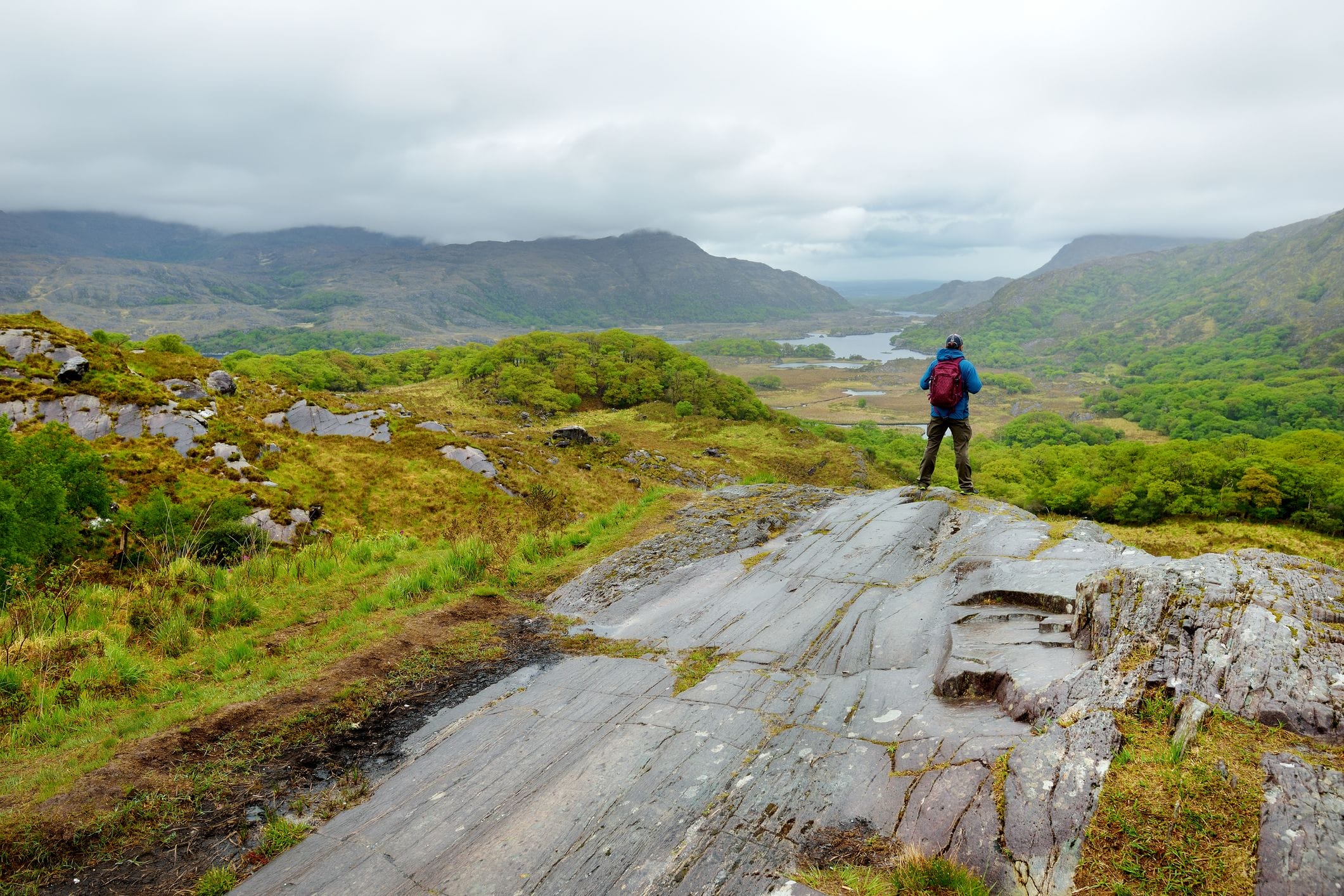
The People & Local Customs
The people of Kerry are known for their warm and friendly nature. It is customary to greet others with a smile, engage in small talk, and show general friendliness towards both locals and visitors. Hospitality is highly valued, and you may often find locals offering assistance or striking up conversations. County Kerry has a rich musical heritage, and traditional Irish music plays a significant role in local customs. Many pubs along the Kerry Way host live music sessions, and it is customary to join in or enjoy the lively atmosphere. The local residents take pride in their cultural traditions, including music, dance, and storytelling.
The Kerry Way Pop Culture
Film and TV
Star Wars: Episode VIII – The Last Jedi
Any Irish Star Wars fans out there will know that the makers of this film franchise used areas around Kerry to film several of there movies. For The Last Jedi, the iconic Skellig Islands were used to film several shots for the movie.
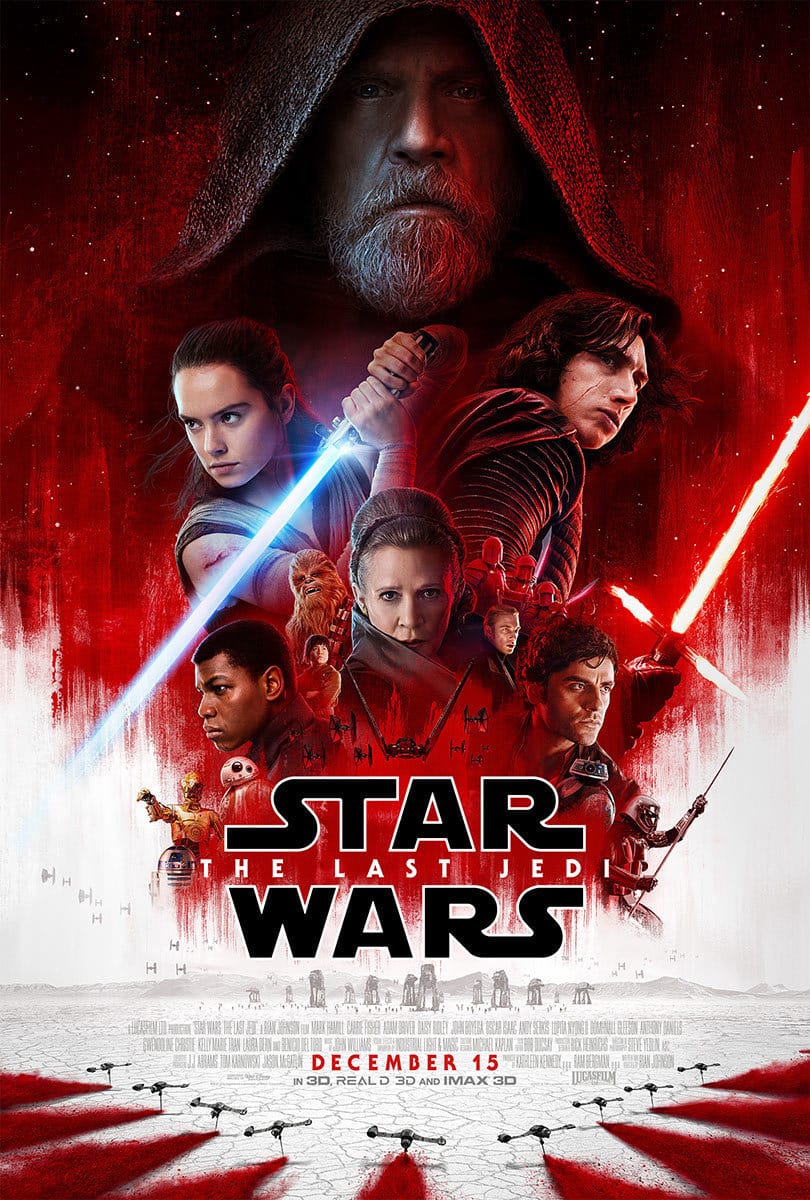
The Lobster (2015)
This black comedy drama, starring Colin Farrell and Rachel Weisz, was predominantly filmed in Dublin but areas such as Sneem and Kenmare were also used to shoot several scenes. Also, the hotel used throughout the film was Parknasilla Resort and Spa, just outside of Sneem village.
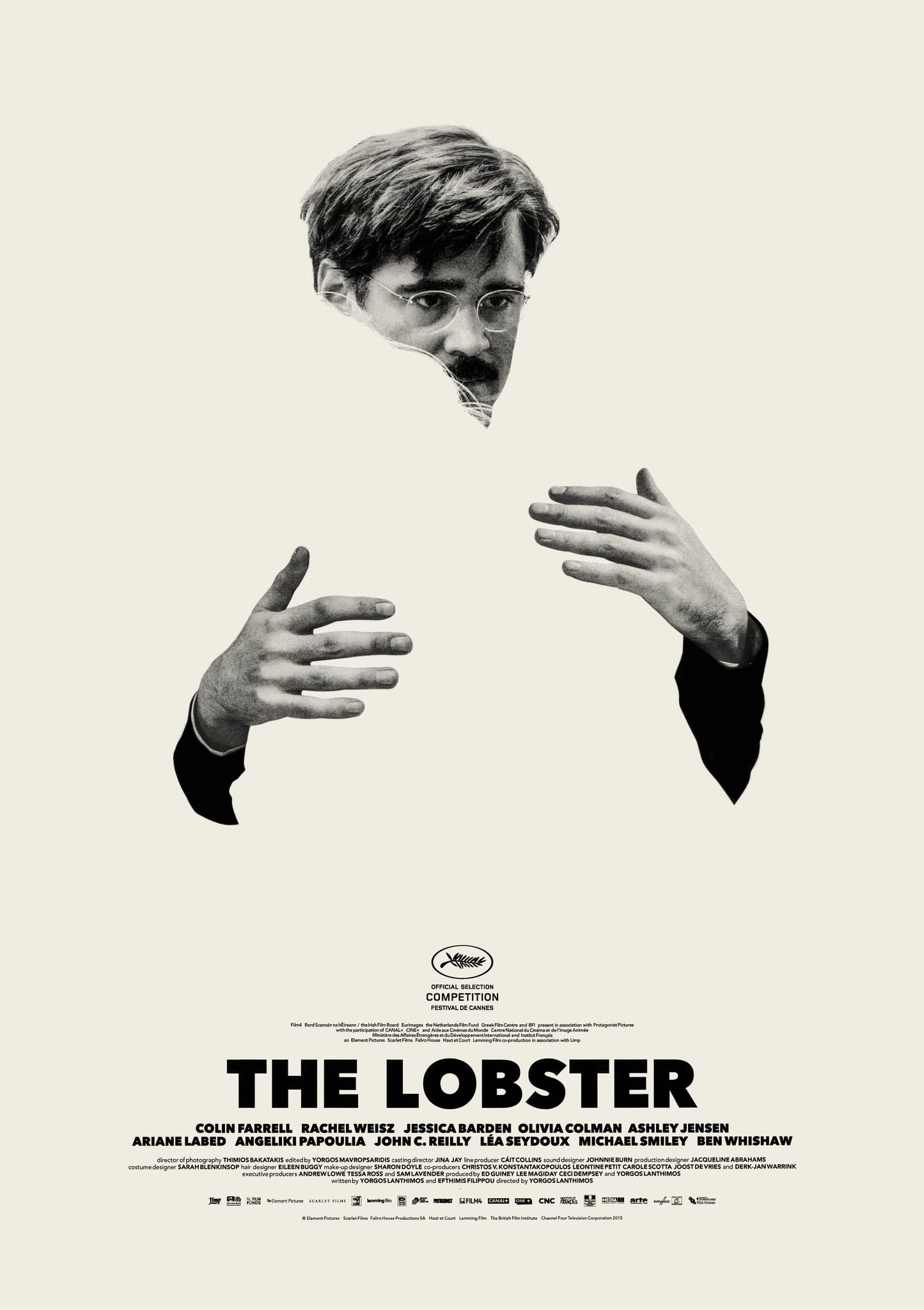
The Dawn (1936)
Shot by Killarney local Tom Cooper, in Killarney, The Dawn was Ireland’s first ever indigenous sound production and was loosely based on the country’s War of Independence featuring an array of local landscapes.

Books
The Colony by Audrey Magee (2022)
This Booker Prize nomination centres around the novel’s protagonist, Lloyd, who spends the summer months in Kerry trying to revitalize his art career painting the landscape and its small community of inhabitants.
If You Could See Me Now by Celia Ahern (2005)
A novel set in Kerry by well-known Irish author, Celia Ahern (P.S. I Love You) where the characters and storyline ultimately shows that living your life to the fullest, letting go of what doesn’t serve you and finding happiness is what it is all about.
Food and Drink
Below are just some of the food and drink synonymous with the country of Ireland that should be tried while walking the Kerry Way:
Irish Stew
A typical Irish dinner if there ever was one. A classic Irish stew contains beef or lamb with vegetables such as potatoes, onions and carrots. This is a perfect, nutritious dish for those that hike as it will fuel you throughout the day and also keep you warm. Don’t be surprised if you see a beef stew made with Guinness!
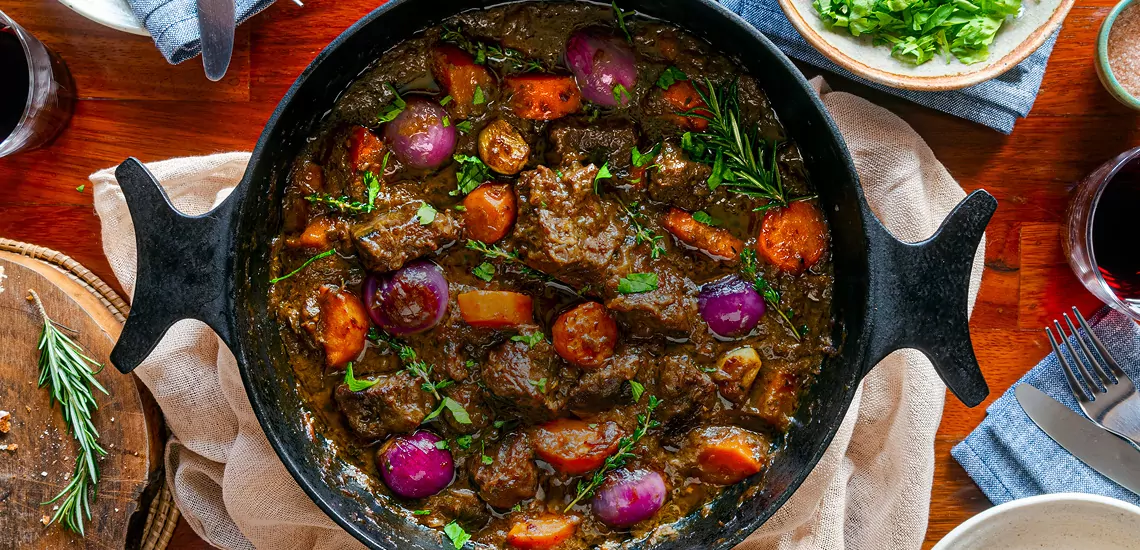
Full-Irish Breakfast
A full-Irish breakfast is typically made up of sausages, bacon, black and white pudding, eggs, baked beans, mushrooms, grilled tomatoes and bread. Irish soda bread is used mostly (see below) and it is typically accompanied by lots of tea or coffee. If you are in a hurry, go to a local shop and get a breakfast roll – whereas many of the above ingredients are added into a fresh baguette. You really have not lived if you haven’t tried one of these!

Black and White Pudding
Yes, we knew some of you might be wondering what pudding refers to… it is popular throughout Irish cuisine. Pudding is basically sausage meat blended with oats or barley. There is a significant difference with black and white pudding as black pudding contains blood whereas white pudding doesn’t.
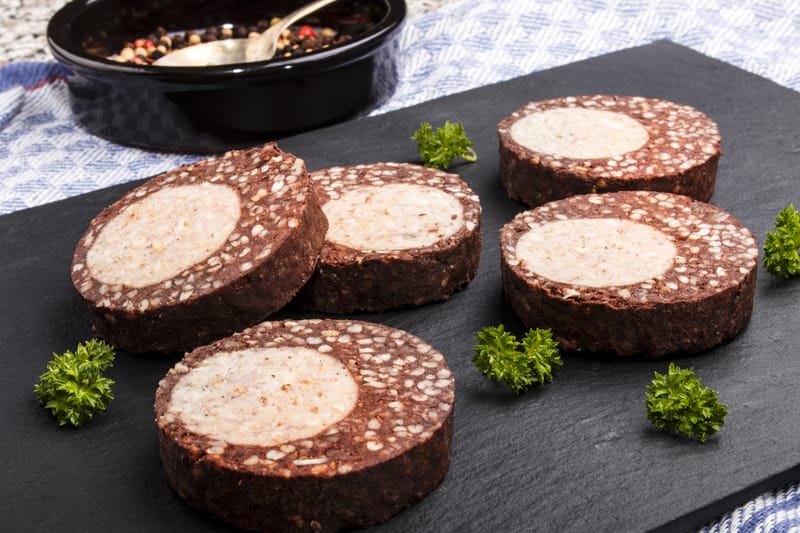
Seafood
Ireland is renowned for its superb and fresh quality seafood. From fresh fish to shellfish, Ireland is a big producer and exporter of seafood. Examples of this fabulous seafood includes salmon, monkfish, pollock, hake, oysters, prawns and mussels. For all of you fish and chips lovers out there, you have not lived until you have tried an Irish fish and chips from a local ‘chipper’.
Seafood Chowder
Seafood Chowder is a hearty soup made with seafood, vegetables and cream and is a popular meal throughout the pubs and restaurants of Ireland. It usually contains fish such as salmon, white fish, and prawns mixed with onions, potatoes, swede and cream. It is typically served with homemade brown bread and is another dish that will keep you full throughout the day!

Bacon and Cabbage
This dish of sliced back bacon boiled together with cabbage and served with potatoes (some form of white sauces optional) has long been a traditional dish of Ireland. This is because each of the ingredients were readily available as they grew their own cabbage and reared their own pigs. You’re trip to Ireland is incomplete until you have tried this typical Irish dish!
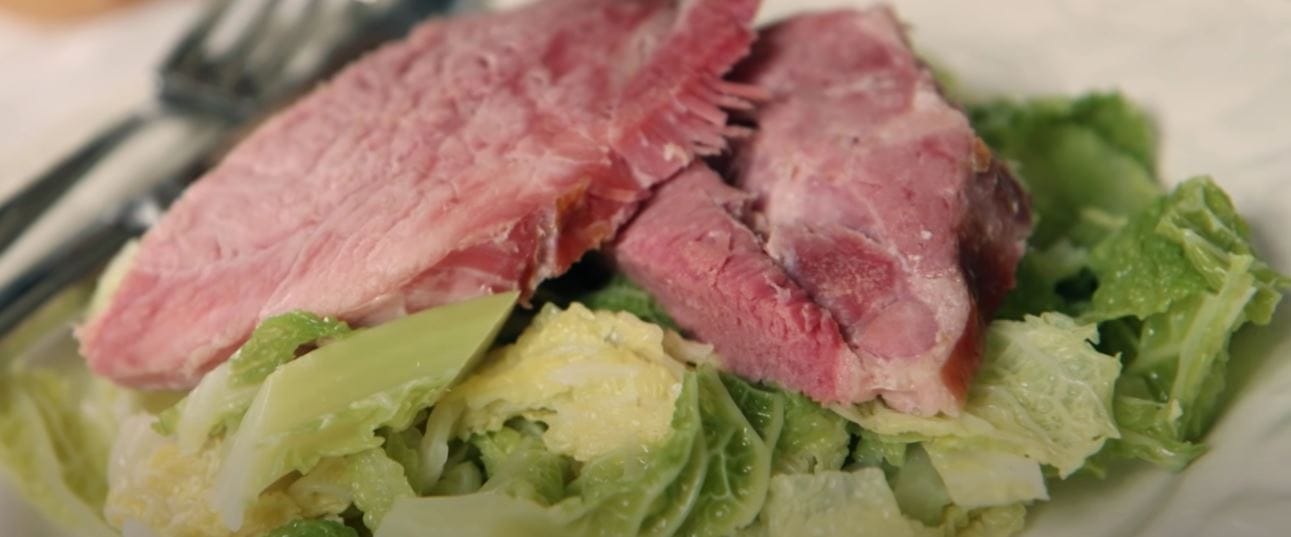
Shepherd’s Pie
Possibly Ireland’s most beloved ‘comfort’ dishes, Shepherd’s Pie is made with a layer of ground beef or lamb and veggies, and is topped with creamy mashed potatoes before being baked to perfection. The dish actually originated in Scotland where crust was used in place of potatoes. However, once it arrived to Ireland, potatoes were quickly opted for instead, and the dish has become a household favourite throughout the country.
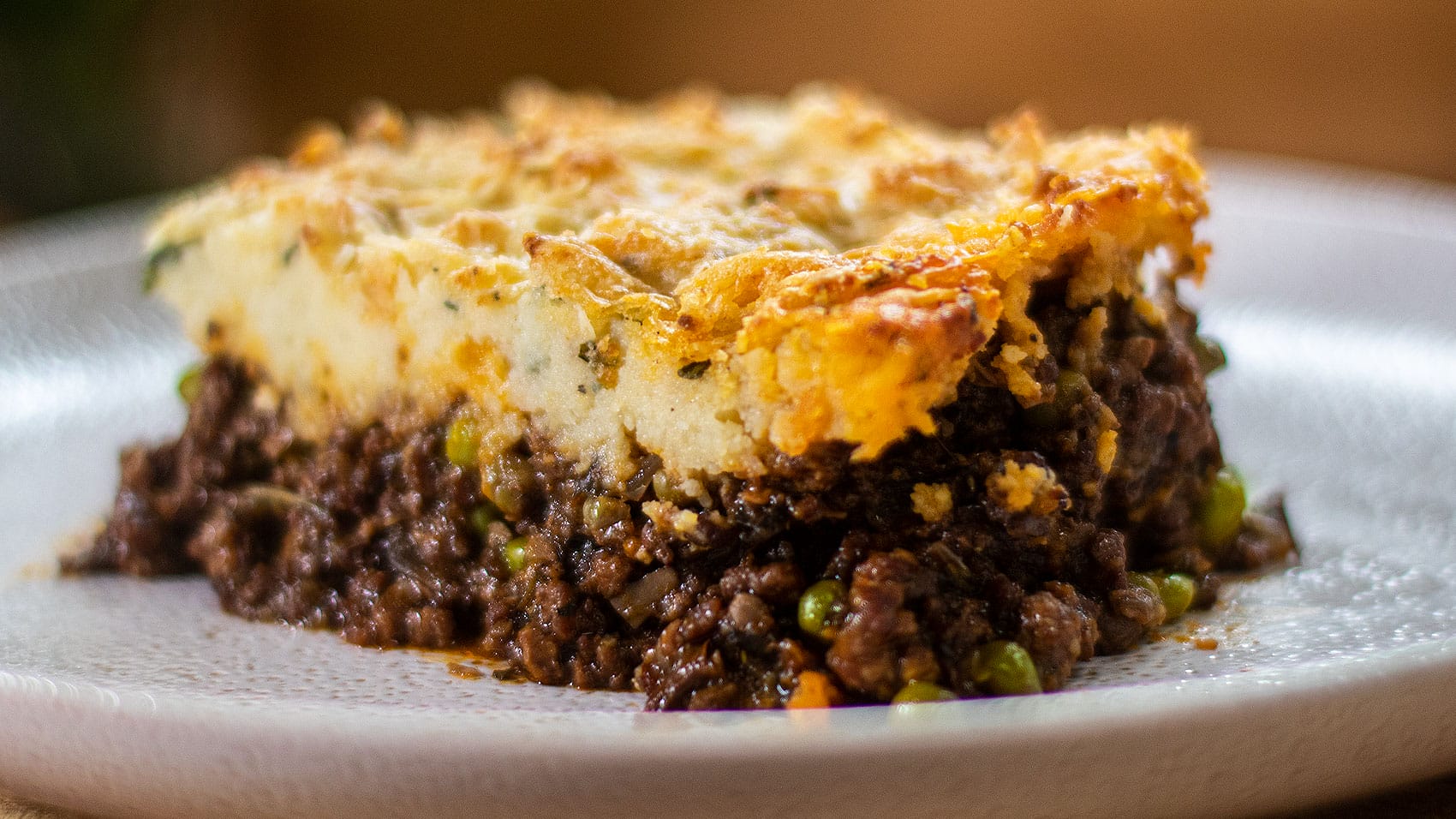
Guinness
Did you even go to Ireland if you didn’t have a pint of creamy Guinness? This dark stout is made from barley, hops, roast malt extract and water. Some of the barley used is roasted to give Guinness its dark colour and unique lactic acid flavour. Brewed at St. James Gate Brewery in Dublin since the late 18th century, this Irish pint is exported across the world, making approximately $2 billion annually. Any Guinness connoisseurs will tell you, you have not had a Guinness unless you have tasted one in Ireland!

Irish Coffee
No, we aren’t talking about Irish roasted coffee beans here. This is a caffeinated alcoholic drink that consists of whiskey, hot coffee, brown sugar topped with cream. There are plenty rumours about how this hot beverage came to fruition but the most commonly believed story is that a head chef in the restaurant of the Foynes Airbase added whiskey to the coffee of some tired passengers who were awaiting a storm to pass. The rest is history!
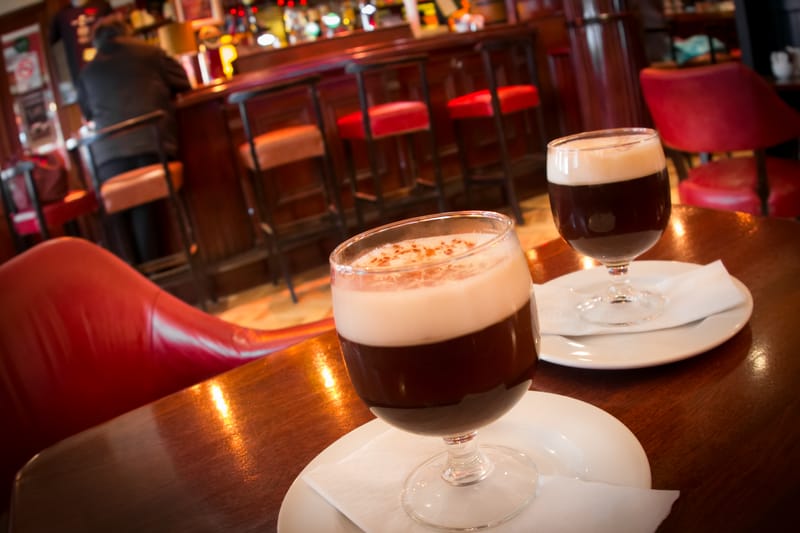
Is the Kerry Way Vegan Friendly
The vegan diet has become more and more popular throughout Europe in recent years, and you will find that there are plenty of vegan options available in most eateries. Each of the accommodation we work with at Hillwalk Tours have given us their guarantee that vegan breakfasts will be catered for once they have been informed. That being said, some of the more rural locations of the trail may have limited options so we advise bringing certain items such as plant-based milk, nut butters or protein powders if you so choose.
In addition, the following apps show restaurants which offer vegetarian and/or vegan opions:
Nearby Trails
There are various other Irish trails available to you once you have completed the Kerry Way. Here are the other Irish hiking tours we offer:
Kerry Way Tips and FAQs
Probably one of the most common questions asked when walking the Kerry Way or any trail for that matter is – what will I pack?
Once you have fully booked your Hillwalk Tours hiking holiday, you will receive a detailed ‘recommended equipment’ list inside your Walking Pack. For those who are still unsure of what to bring, here are some of the things we advise you bring with you along the Kerry Way:
– Waterproof Cothing
– Fleece and other warm clothing
– Base Layer
– Light, comfortable Trousers
– Wicking Socks
– Suitable Hiking Boots
– Backpack/Rucksack
– Hat and Gloves
– First Aid Kit and Foil Blanket
– Whistle and Torch
– Insect Repellent
– Mobile Phone
– Plug Adapter/Converter
For more on what to pack – check out these packing musts.
Unfortunately, dogs are not welcome on any of the walking trails in Kerry or the surrounding mountains due to the amount of farm animals such as cattle and sheep.
As most of the accommodation we work with in this area don’t accept pets of any kind, it is not possible to bring any pets, such as your dog, on a Hillwalk Tours hiking holiday.
As the trail is one of Ireland’s most popular, you will rarely be alone while walking it. You will always meet people along the way with the only exception being during the depths of winter.
As a result of this, the Kerry Way is deemed safe for solo hikers.
Furthermore, conditions at certain points along the trail can be slippery, muddy and wet so general precautions still apply.
If you experience any difficulty or emergency of any kind, it is advised that you phone the relative emergency services on 999 or 112. It is also important to note that mobile phones in Ireland can call this number with or without mobile/cell coverage.
For those who have fully booked their Hillwalk Tours hiking holiday on the Kerry Way, we provide 24/7 on-call support to all of our customers and you will receive a detailed description on how to remain safe during the course of your hike.
Yes, solo hikers are more than welcome to complete the Kerry Way and the trail proves to be quite popular for solo hikers. However, due to the limited availability of single rooms along the trail, it is important to note that booking early is recommended, in addition to a single supplement charge also being applicable.
We believe that the beauty of the Irish countryside should be enjoyed by everyone. With this in mind, we designed our hiking tours to cater for practically all levels of fitness. Our range of ‘Gentle’, ‘Moderate’ and ‘Challenging’ hikes in all regions allows you to decide how far you wish to walk each day and the pace you set. So, whether you are a novice walker or an experienced hiker, we always have a tour to suit you.
Cycling is not permitted on the Kerry Way. As it was predominantly designed as a long-distance walking route, you may come across terrain, underpasses and gates at several parts of the trail making it difficult for biker riders. Therefore, it might be best to leave bike at home this time!
Generally, our tours take place between the months of March to October to hopefully allow for good, dry weather and longer days of daylight while you carry out your tour. This will hopefully ensure that you enjoy your hiking experience with us to the fullest. You can also check out the individual tour page for the Kerry Way trail on our website.
Our 7-Day tours include 6 nights of accommodation – specifically the first 6 nights on your hiking tour. Your tour finishes on the seventh day when you check out of your last accommodation.
To ensure you’re fully equipped and informed throughout your trail we provide a very informative ‘Walking Pack that you take with you on your trail. This pack has every detail you will need to successfully finish your trail without any disruption. We advise that you carefully look through this pack before embarking on your journey so that you have some sort of idea of where you’re going and what you will entail throughout the journey. Included in this pack is as follows;
– Route notes (prepared by a member the Hillwalk Tours team who has walked every step of your tour)
– Detailed hiking map(s)
– Waterproof map-case
– A sneak-peak at where you will be staying
– Our tips on the most interesting attractions to visit along the trail
– A look at fascinating local history
– A guide to the best places to eat and drink
– Mountain safety information, emergency contact details & the country code
The Kerry Way Image Gallery
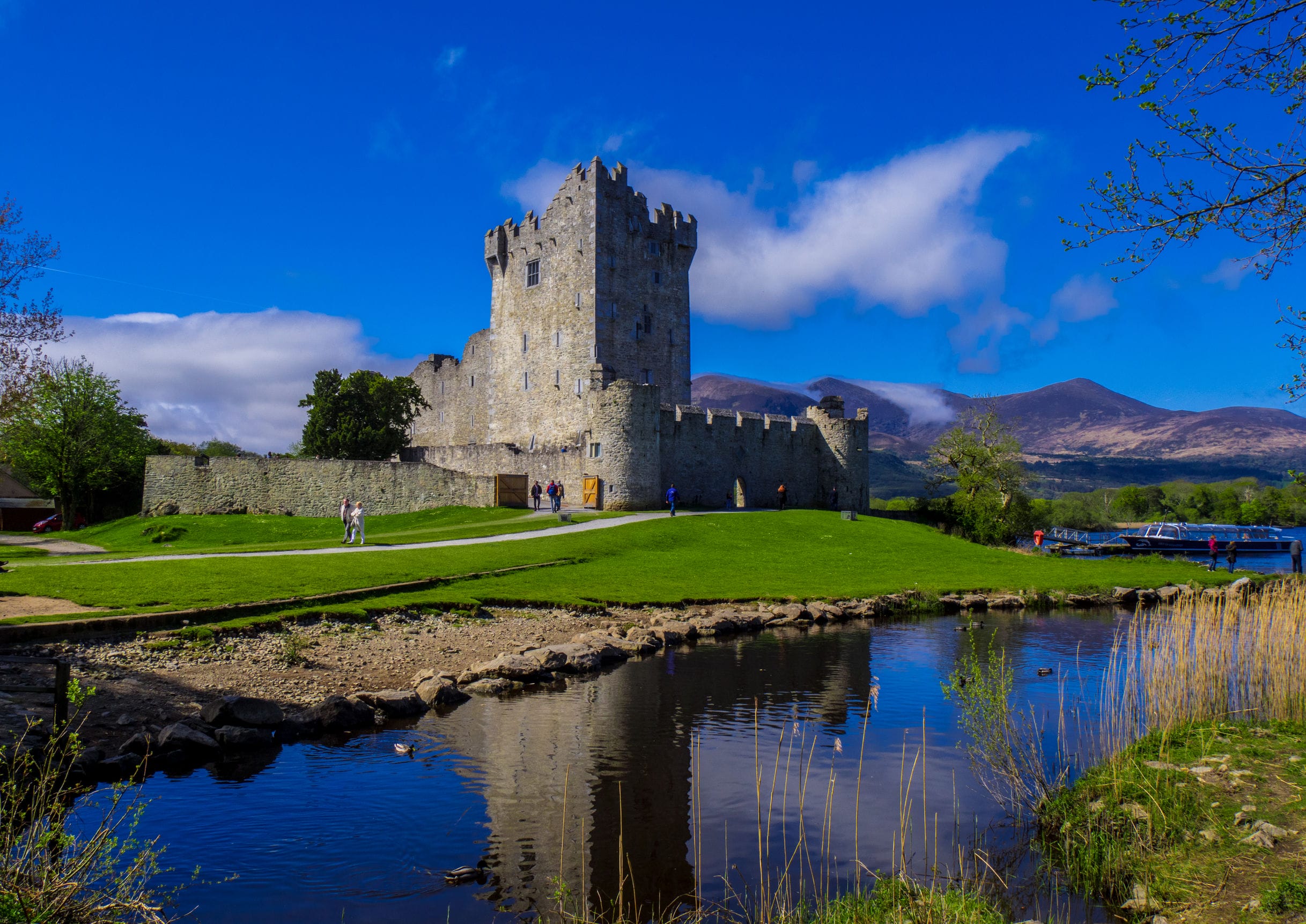
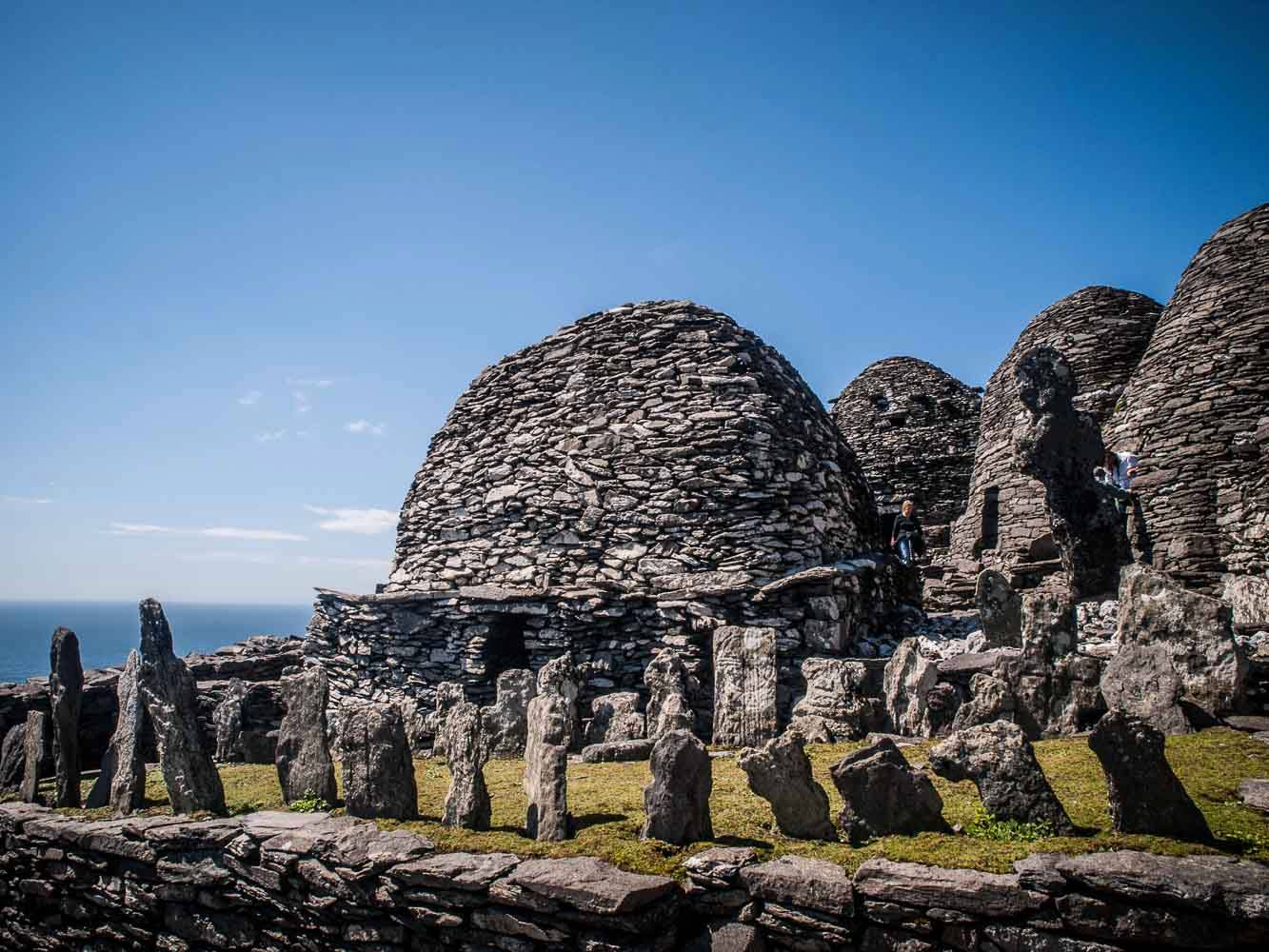
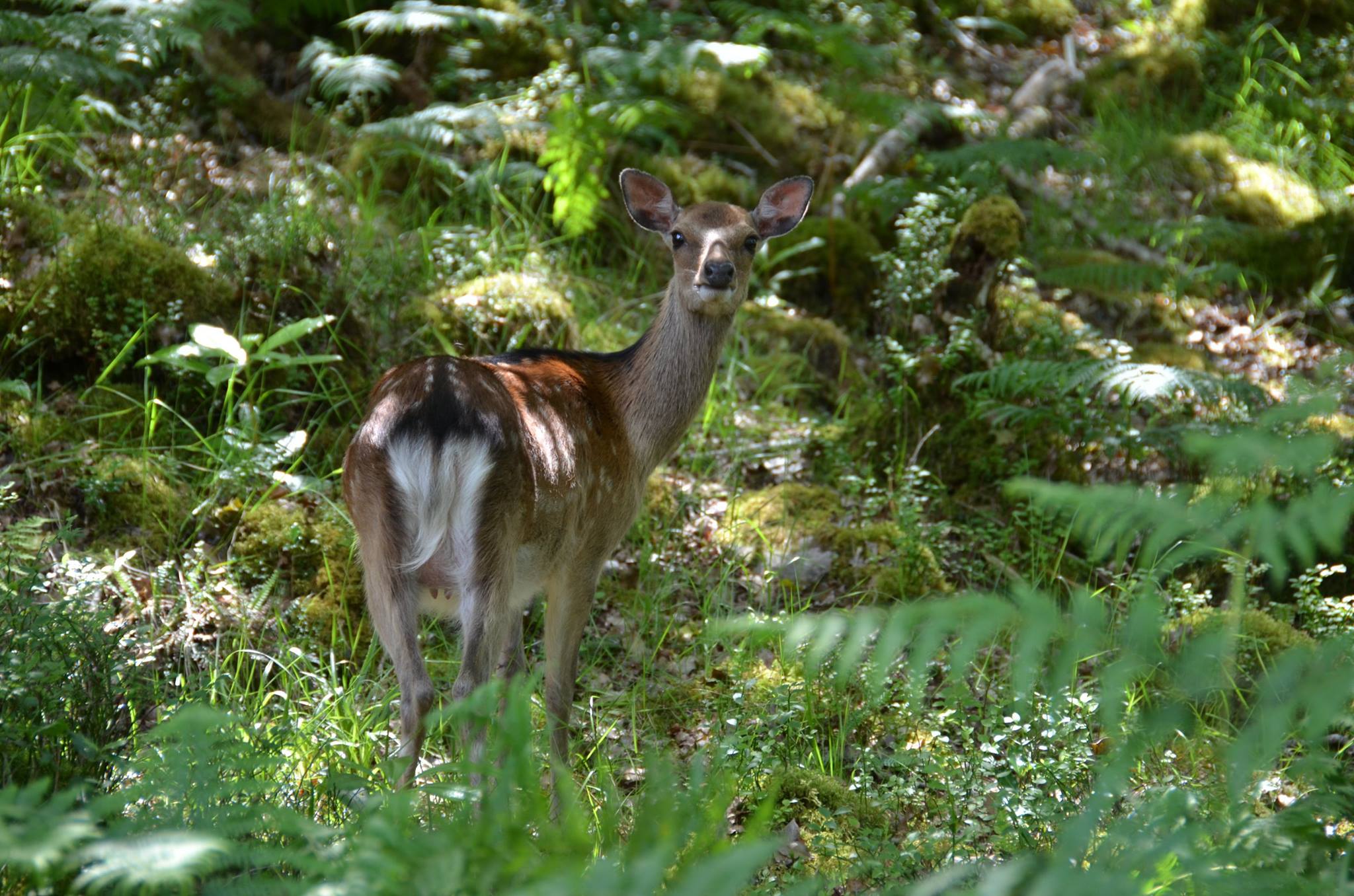
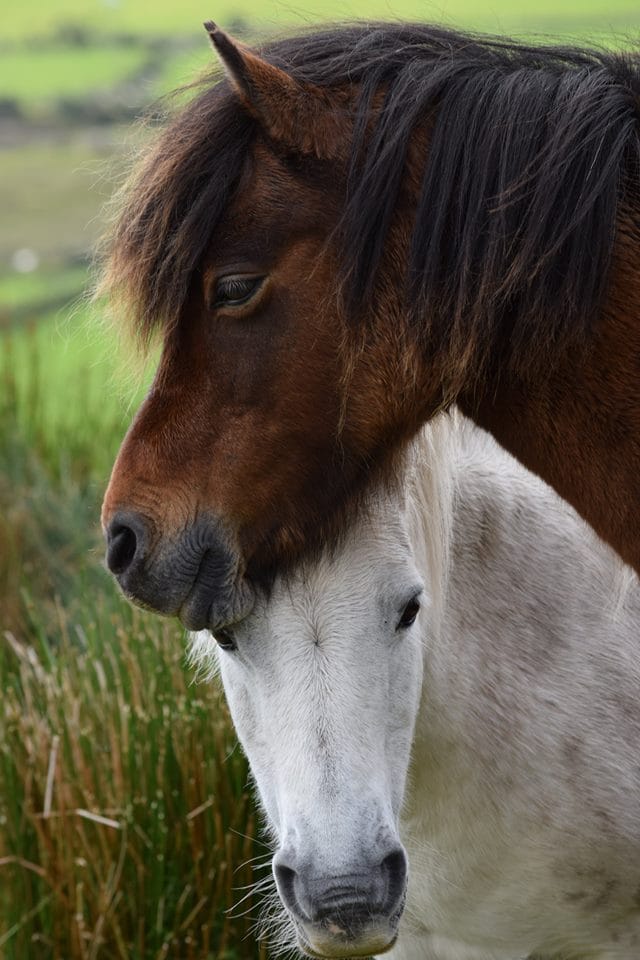
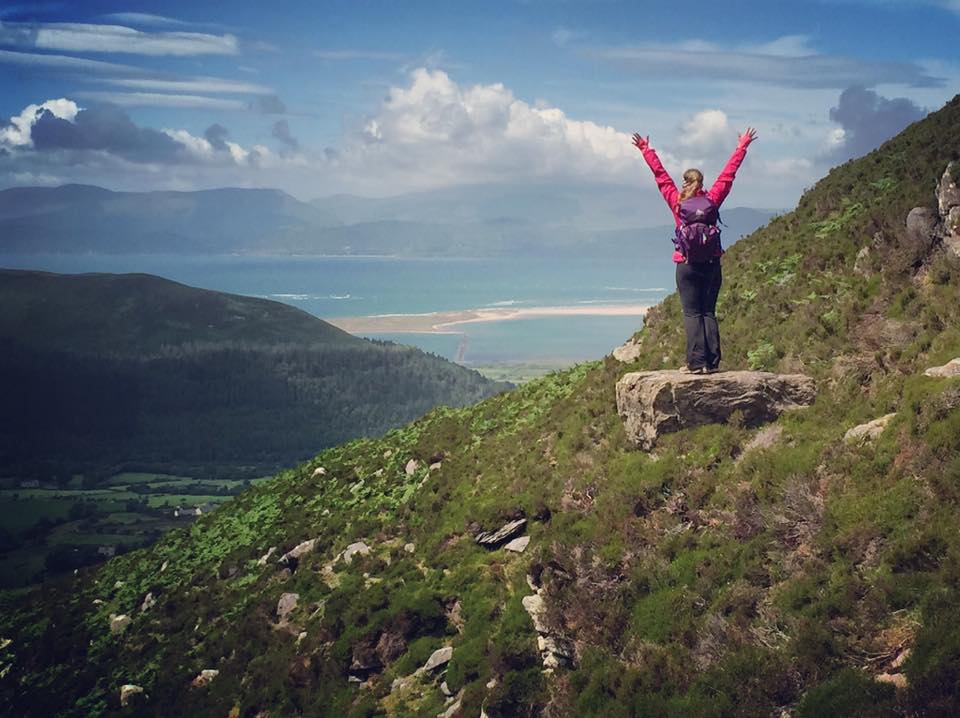
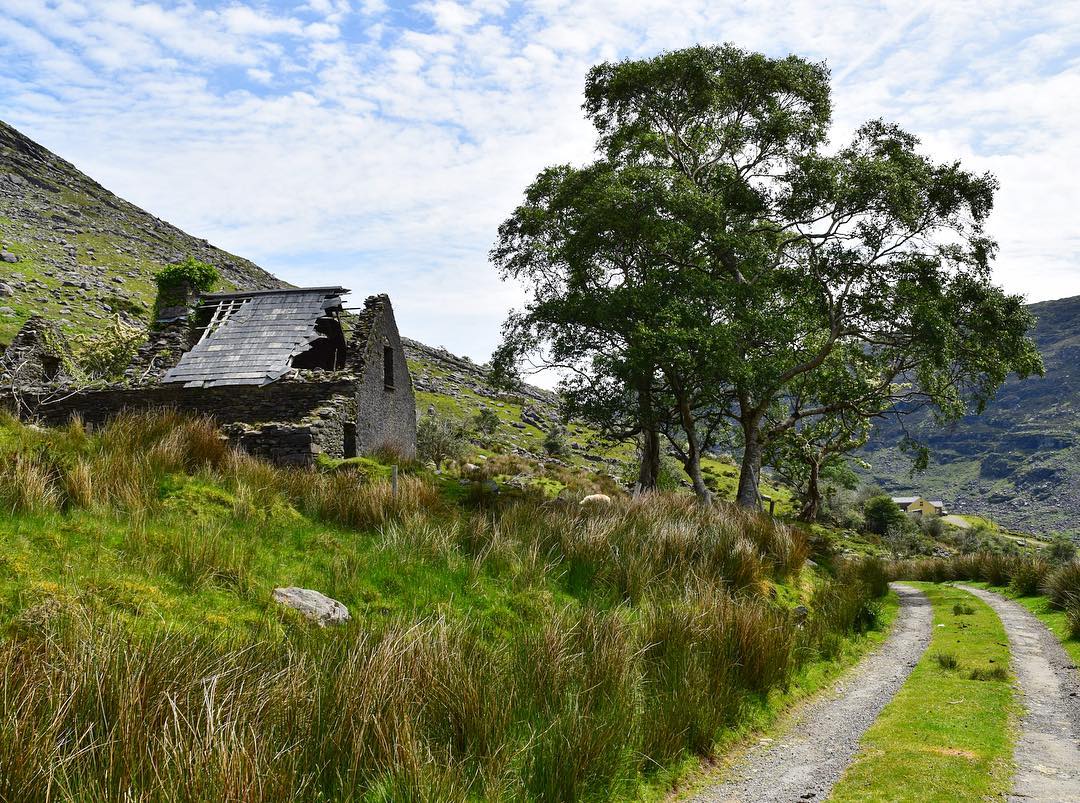
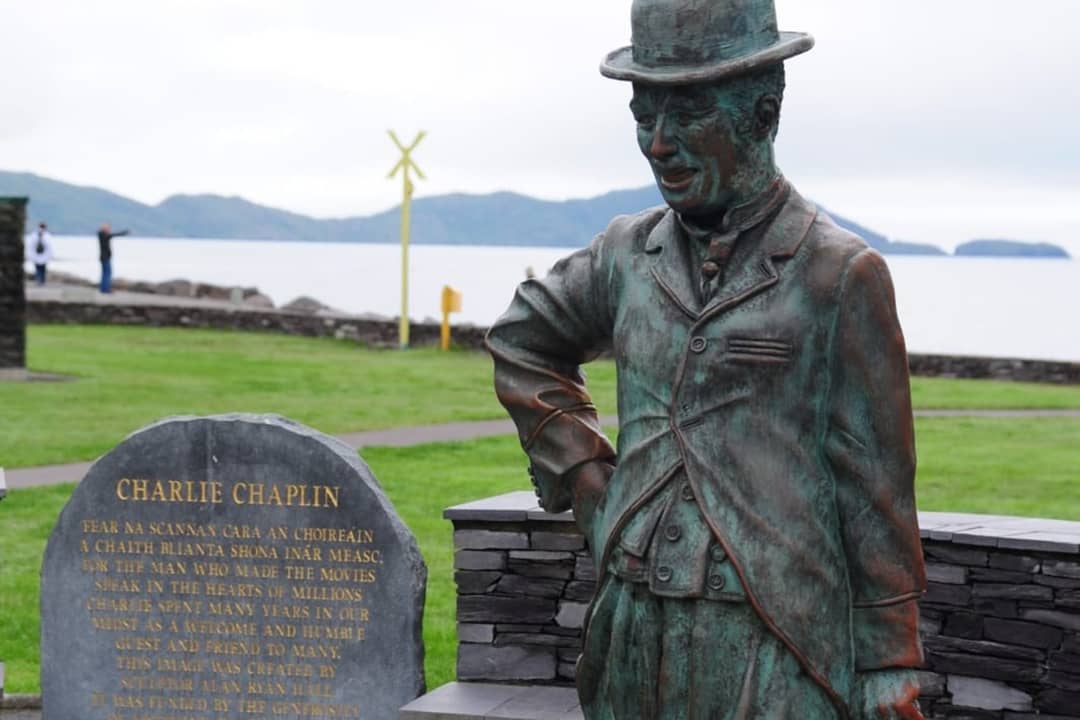
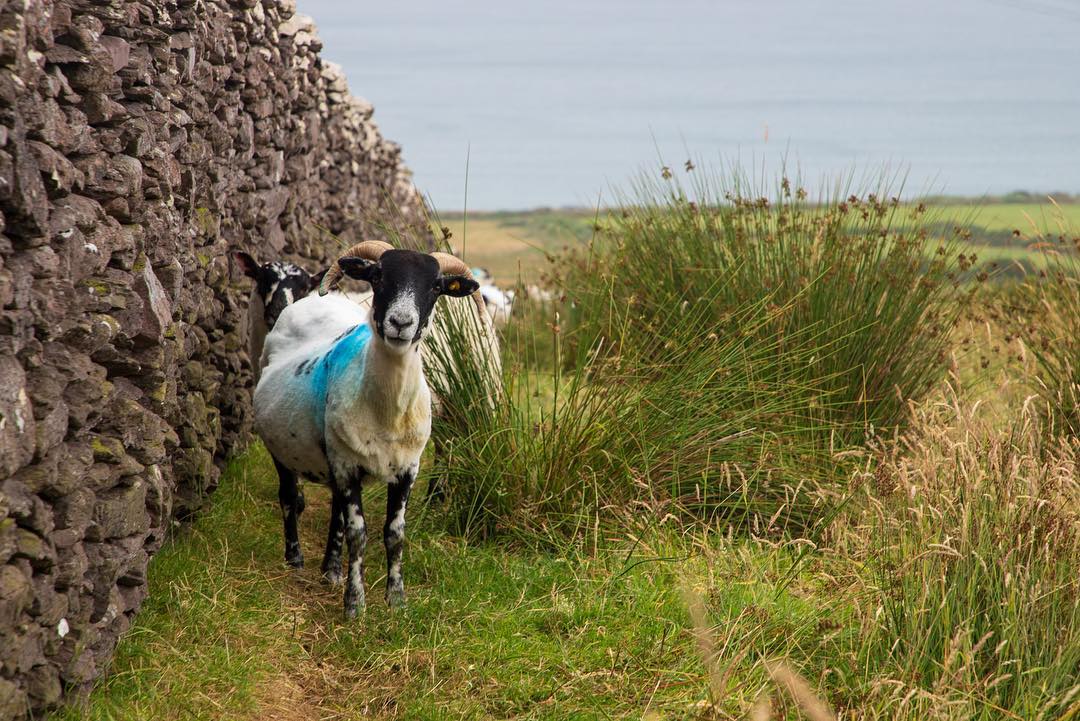
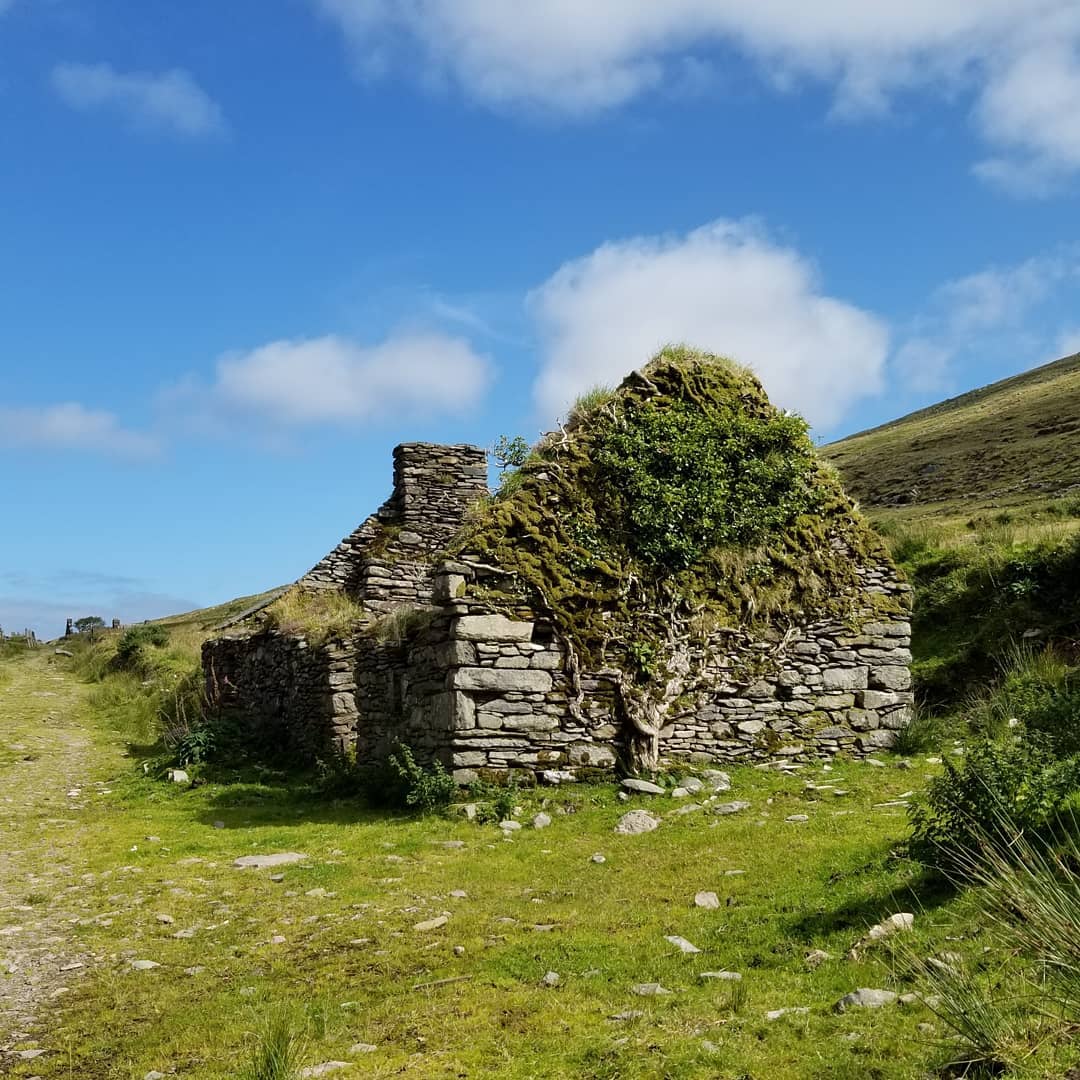
Hillwalk Tours
About Us
Hillwalk Tours is an award-winning walking tour operator which specialise in self-guided walking holidays in Ireland, Scotland, England, Wales and along the Camino de Santiago in Spain. Our goal is to create happy experiences for all of our customers, suppliers & staff.
Fill out the form below with any questions you may have and we will get back to you promptly.
Follow us on our social media platforms
Customer Reviews
Leave No Trace
We like to walk in nature and since you are reading this – we believe you do too! It is important to ensure that our impact on the environment is limited so that hikers can enjoy the same view after us. The rule applies: when you leave, make sure that nature looks the same as when you arrived or simply put “leave no trace.” As more and more people take to the great outdoors, our collective mark on the environment increases.
What does this mean in reality? Of course, do not leave any rubbish or waste behind. Do not collect stones, flowers, or other “souvenirs”. Don’t carve your name on a tree or break branches… I think you get the drift. It is imperative for walkers to play their part in making sure litter, damage to vegetation and all forms of pollution are limited.
Noise can also be a form of pollution. Whoever walks through a forest talking and laughing loudly, for example, ruins the peace and quiet of other walkers, who can no longer hear the birds. The same goes for cell phones that suddenly start ringing. Keep the volume down and respect your surroundings. Ultimately, the point is to ensure that as many people as possible can enjoy walking through nature. So that applies to you, but also to those who tread the path after you.
Hillwalk Tours proudly supports sustainable tourism and loves the countryside as it is – wild, peaceful and clean. We are proud to support the “Leave No Trace” initiative that aims to preserve the natural beauty of each nations countryside where we offer hiking holidays. We try to create happy experiences for our accommodation too, and the restaurants, shops and taxi companies that serve our walkers. These are often small businesses located in isolated areas that have been left behind by urban migration and a lack of investment in rural regions. Their warm hospitality and friendly welcomes epitomise the magic of a Hillwalk Tour and we’re dedicated to helping keep these rural communities alive.
The Benefits of Hiking
In recent years, walking and hiking outdoors has been widely reported to have numerous physical and mental health benefits. The following are examples of some of these benefits:
Improve strength and fitness
- Weight loss
- Muscle gain
- Improve metabolism
- Improve digestion
- Better quality sleep
- Increase in Vitamin D
- Improve discipline
- Sense of achievement
- Living in the present moment
Hiking Equipment List
For a more in-depth list of recommended hiking equipment list, click here.
Make A Booking
Are you ready for your Kerry Way adventure? Get started by simply filling out the booking form below!


